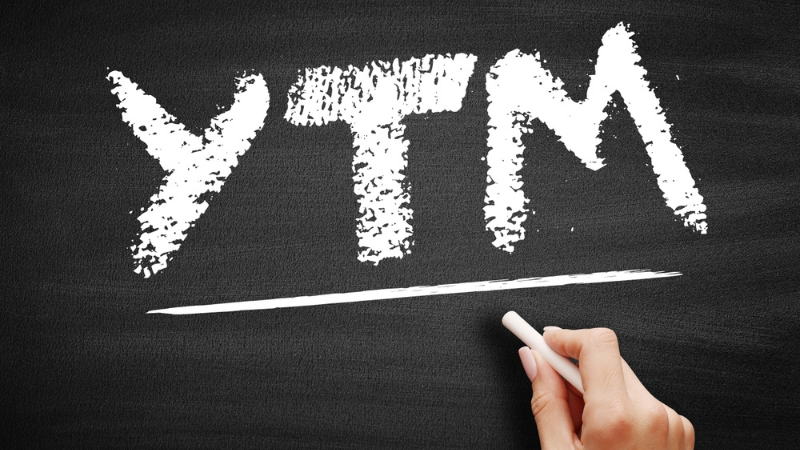
FM Nirmala Sitharaman, in her budget speech in the year 2022, announced the likely introduction of Central Bank Digital Currency (CBDC) by the RBI in 2023. With a Digital Rupee that will be based on blockchain and other technologies, the Reserve Bank of India will aim to provide a big boost to the country’s digital economy. The FM also stated that this currency management system will be far more efficient and cost-effective than the existing system.
The budget 2022 announcement is considered one of the milestones for the start of a new revolution in India’s digital currency space. Finance Minister Nirmala Sitharaman has since made CBDC the latest buzzword across financial news and networks, although the common man remains unfamiliar with this term.
Most of us have heard about cryptocurrency, but what exactly is CBDC and how does it work? Here’s what you need to know about CBDC and some of the latest developments surrounding this concept.
What is CBDC?
CBDC is short for Central Bank Digital Currency. This is a form of digital currency that is government-issued and backed by the central bank of a country. Just like a country’s physical currency, the CBDC will act as a medium of exchange, store of value, deferred payment standard, and unit of account.
India’s central bank, the Reserve Bank of India (RBI) plans to roll out this digital currency in 2023. Although CBDC will be a legal tender issued by the central bank, it will be in digital form. It will act as an electronic record or digital token of the country’s official currency, which is the Rupee.
Did you know
In 2021, there was a survey conducted by the Bank of International Settlements (BIS) on digital currency. The results of the survey revealed that close to 86% of the world’s central banks were in the process of considering the launch of CBDCs and the remaining were about to initiate pilot projects. This shows the increasing demand for digital currencies across the globe.
Also checkout : Our webstory on the retail pilot project of CBDC
Why is there a growing need for CBDC?
Cryptocurrencies have been dominating the digital currency space for a few years now. However, these are unregulated and, in some countries, even illegal. Since the advent and increased popularity of unregulated cryptos, central banks across the globe are seeing reduced usage of paper currency. Therefore, there is a need to popularize a more legitimate and acceptable electronic currency format.
Since CBDC will be backed by distributed ledger technology (DLT) and based on a permissioned blockchain, it will carry more authenticity as compared to permission-less crypto assets. Central monetary authority of a country, in India’s case, the RBI will have control access to the blockchain. Digital currency will therefore offer better efficiency and, with its launch, the country’s monetary system can avoid any negative impact of private currencies like Bitcoin.
Benefits of CBDC
Some of the benefits expected out of CBDC are:
- CBDCs will be equivalent to fiat currencies. Therefore, the transactions will be legal and final, thereby eliminating any risk of settlement in the financial system, especially for banks.
- It will act as a value storehouse that will further transfer the value across entities.
- It is expected to involve lower transaction costs and enable the easy flow of funds.
- It will enable faster settlement as compared to physical money. Real-time local and global transactions will be possible through this system. There will be no hindrances like time zone differences since these will not matter in currency settlements.
- CBDC also holds the potential to offer better liquidity and scalability. This is because, as compared to private digital currencies, it will have better acceptance and ease of transactions.
Latest news – CBDC Wholesale and Retail pilots
The pilot project of CBDC Wholesale segment started on 01 Nov, 2022 and was limited to the settlement of secondary market transactions in government securities. The use of (e₹-W), is expected to make the inter-bank market more efficient.
Based on the success of CBDC Wholesale, RBI launched the Retail version of the project on 01 Dec, 2022.
State Bank of India (SBI), ICICI Bank, Yes Bank, and IDFC First Bank. As part of the first phase of the pilot, these banks will cater to four major cities namely New Delhi, Mumbai, Bhubaneswar, and Bengaluru.
In the second phase, HDFC Bank, Bank of Baroda, Union Bank of India, and Kotak Mahindra Bank will partner in the pilot for rollout in Ahmedabad, Guwahati, Gangtok, Patna, Shimla, Hyderabad, Lucknow, Kochi, Indore.
As per RBI, there are 50000 users of the retail digital rupee and 7.7 lakh small-value transactions have taken place since the launch of the retail CBDC. 5000 merchants are also said to be participating in the pilot project.
Conclusion
CBDC is likely to bring a pragmatic shift to the economy with digital monetary transactions in the near future. With the adoption of this currency system, there will be both improvement and efficiency in the overall monetary infrastructure. Apart from offering convenience, it will also boost the government’s objective to shift toward a digital economy. We need to, however, wait and watch whether CBDC can establish an ecosystem for faster real-time remittances across the globe.
FAQs
CBDC will be a sovereign equivalent of private cryptocurrencies like Bitcoin. Digital payments are a mechanism to exchange fiat currency online through bank accounts. With CBDC, there will be no need to have a bank account, and real-time transactions can be cost-effective.
No, the government does not plan to ban cryptocurrency after the introduction of the Digital Rupee. The idea of introducing the Digital Rupee is to have a legal digital equivalent of the country’s Fiat currency.
Many countries across the globe are in the process of examining digital currency options, with China becoming the first country to test a digital currency.
The RBI is currently working on establishing a mechanism to make the digital currency risk-proof against cyber threats.
The impact of CBDC on the banking system could be observed after its launch. According to experts, however, the introduction of digital currency will ease the current pressure on banks by bringing in the efficiency of transactions.



























